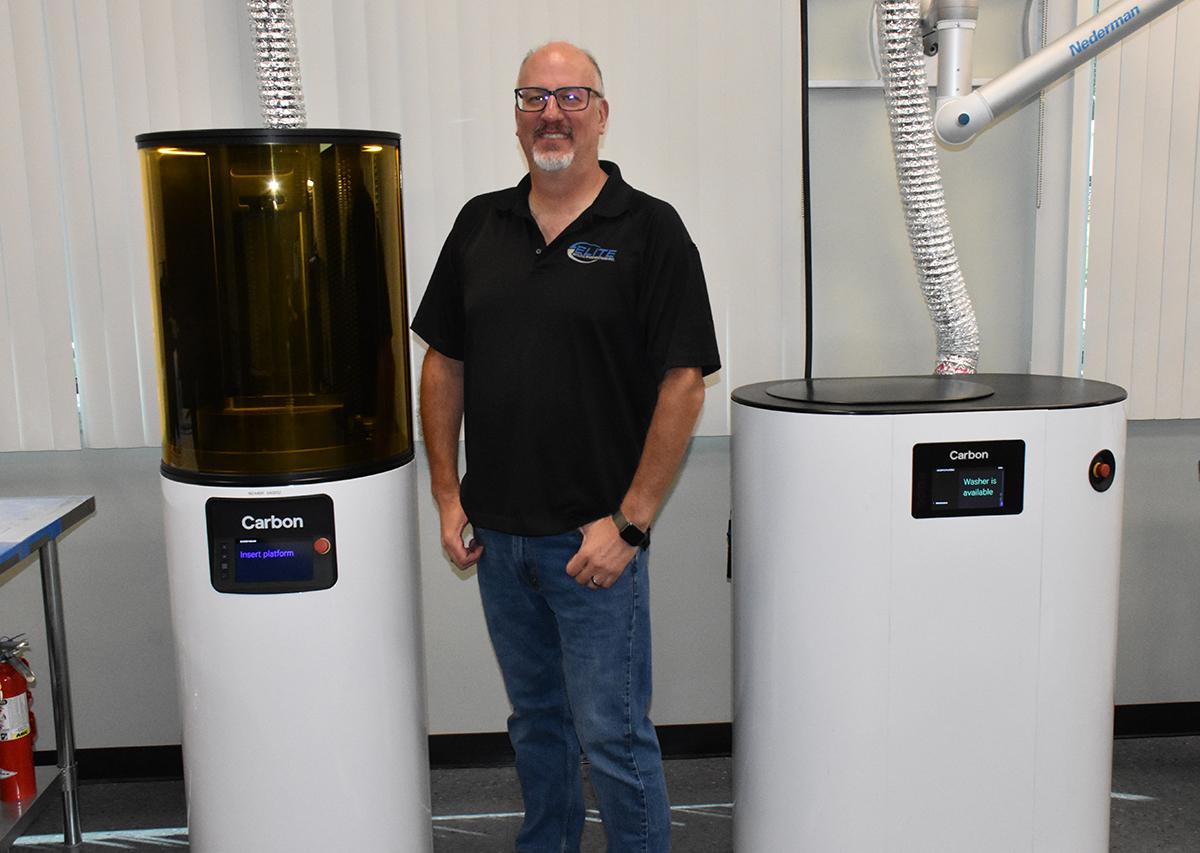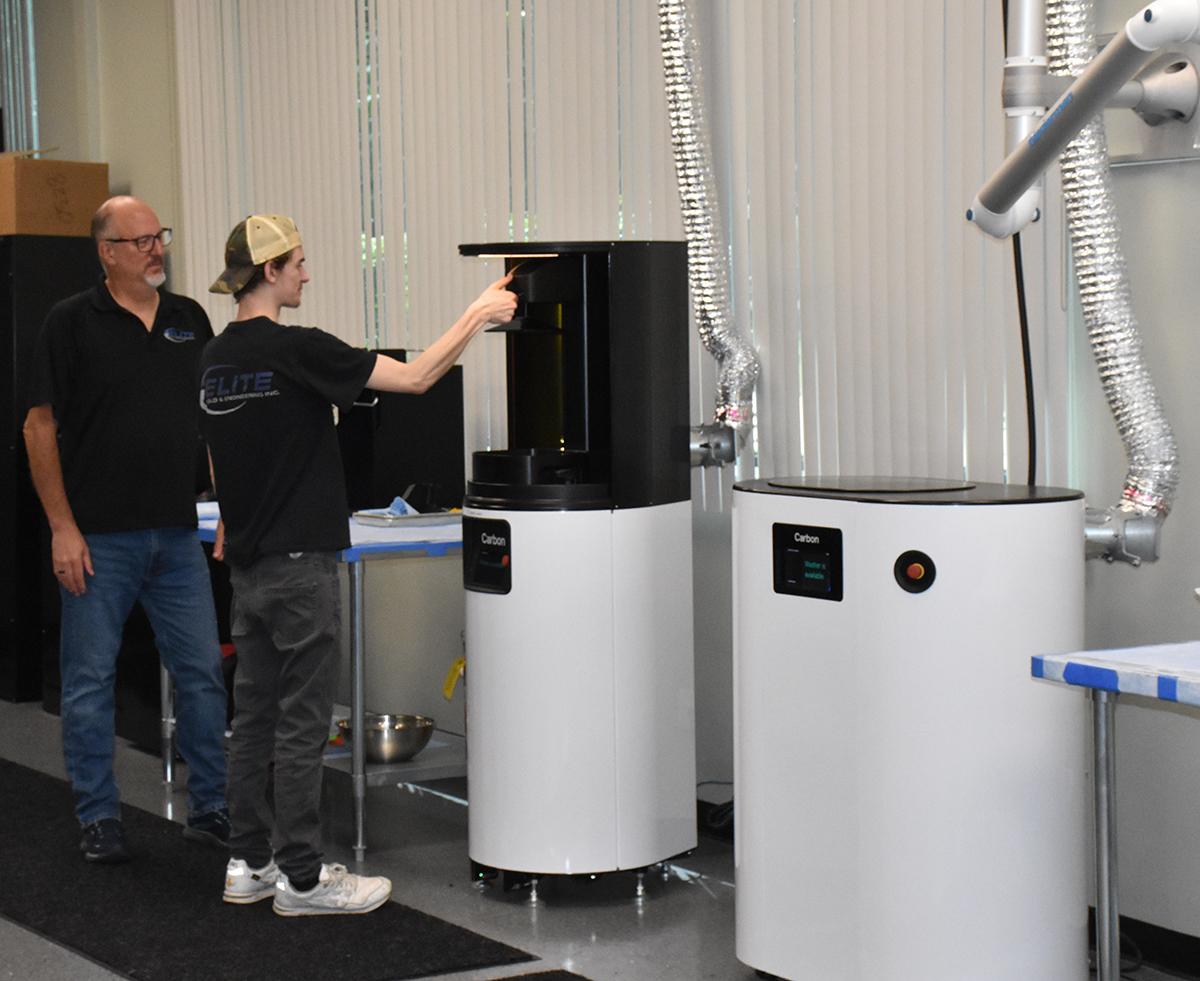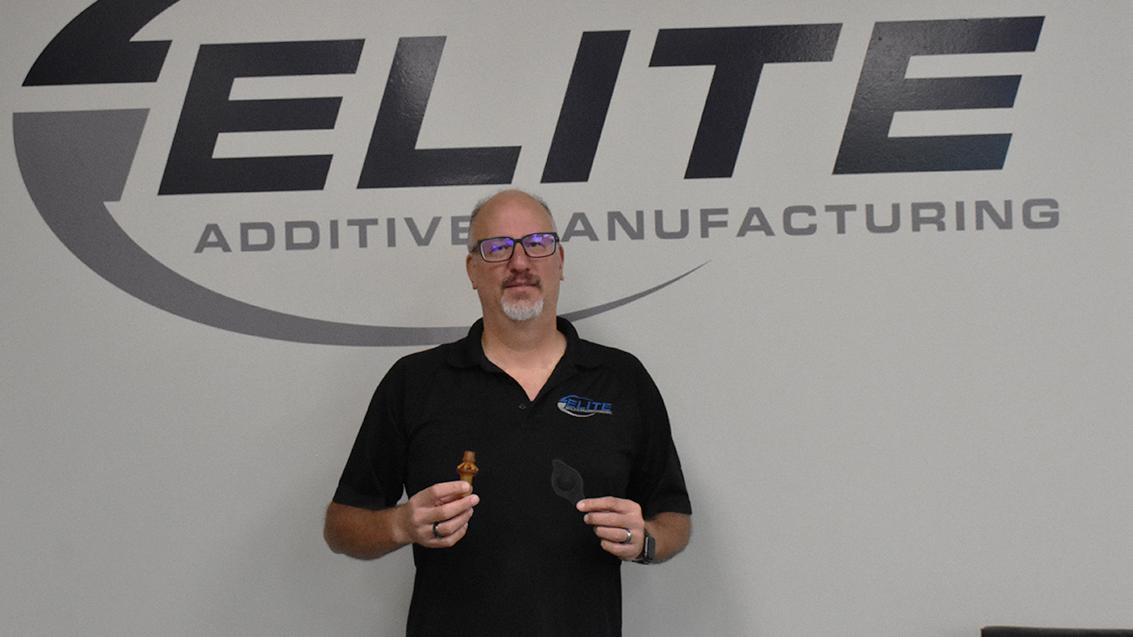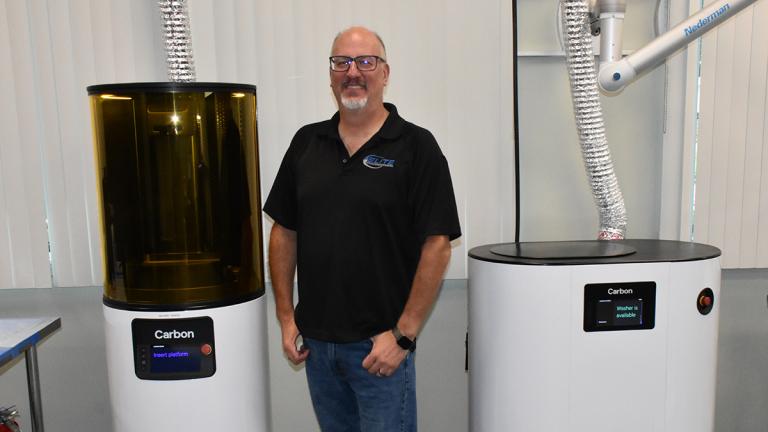Efficiency, quality, cost.

Regardless of the reason, entry into additive manufacturing and 3D printing has been a game changer for Elite Mold & Engineering Inc.
About a year ago, with the help of Macomb County’s Department of Planning and Economic Development, Elite applied for and received an Industry 4.0 implementation grant from the Michigan Economic Development Corporation. With the $25,000 matching grant, Elite, based in Shelby Township, purchased a DLS printer and accompanying DLS technology. And on Jan. 1, it opened a 280-square foot DLS printing facility.
With a total $300,000 investment over the life of a three-year leasing period, the DLS technology will allow Elite to get parts into customers’ hands 70% faster and 50% cheaper than conventional mold build processes. And the DLS technology allows them to respond to customer project demands in just days, not weeks or months.
“The county generously put it out there to help small businesses like ours to take that leap into the future with new technology,” Elite CEO Paul Patrash said. “Because sometimes it can be cost prohibitive and might not be in the budget or plan. But this definitely helped open the door for us to get into 3D printing and manufacturing as a new technology for our company.
“We’ve been in business since 1982 doing injection molding and tooling. And we saw the future and we decided to invest into it,” he added.
DLS 3D printing, commonly called Carbon DLS, stands for digital light synthesis. DLS 3D printing is a type of additive manufacturing that utilizes light to map printed parts, which subsequently completes a curing process using heat to achieve the intended material properties DLS is notable for its ability to balance design flexibility and speed of production with desirable plastic material properties not obtainable with other types of 3D printing.

DLS 3D printing utilizes a UV laser projection to cure liquid plastic resins into solid parts. In DLS 3D printing, a laser at the bottom is projected into a resin reservoir by passing through an oxygen-permeable window. UV images are projected on the resin in layers and the part takes on a solid form as the build platform rises.
Most of the parts that Elite prints on the DLS printer are for automotive customers – housings and covers found both inside the vehicle and under the engine. Using CAD designs, they make parts that are trialed for form, fit and function, and whether or not they work with mated parts. Once the customer is satisfied with the part, Elite can produce a low volume of parts or build an injection mold that will produce thousands of parts or hundreds of thousands of parts. Prior to 3D printing, the company would spend long hours creating a part design, creating an injection mold and manufacturing the part. And then it might add to the cost and time to create four more versions of the same part for the customer to consider. And if the customer were to ultimately choose the first part design, weeks and months were wasted creating the other parts. Now, those five designs can be created in a matter of hours or days.
The only limitation at this point is the size of the product produced in the Carbon M2 Printer. Parts must fit in a 12x7x5-inch envelope. Otherwise, Elite and its customers are only limited by their collective imaginations.
“We wanted to capture some of the opportunity with our customers earlier on in the design phase or post design phase before they go into prototype low volume,” Patrash said. “It gives them a really good option to prove out their part design, get some parts in their hand very quickly. It gives our customers a really quick, easy and affordable way to prove out their concepts.”
3D printing technology is growing so fast, Elite is only leasing its printer rather than buying it. It did purchase an oven, UV curing station and cleaning

booth. Patrash said he can see the technology improving exponentially faster in the years to come. And use of cutting-edge technology also has the benefit of attracting younger employees. His son Parker, 22, runs the DLS printing facility.
“This allows us to grow the business into the future with technology and manufacturing processes that are attractive to the younger generation,” Patrash said. “The younger generation is not that interested in building tools and molds the way their father did and their grandfather did. They want the latest and greatest technology, and this is it. It’s clean, it’s current.
“The younger generation likes working with computers, and this is all computer-driven technology. We’re aging out. You walk around here, and everyone is my age,” said Patrash, who just turned 59. “There’s not a lot of young people coming up in this trade, so how do we remain competitive in manufacturing in Michigan, in the United States? It’s technology like this.”
Patrash has attended each of Macomb County’s Industry 4.0 workshops. He said the workshops have been vital to educating Macomb County’s manufacturing community about the importance of embracing and using new technologies, or face being left behind.
Patrash said there was a general awareness among the manufacturing community as to the technology that is available. But he said manufacturers didn’t really know how to get involved or apply it to their businesses. Elite was one of the first companies to apply for the implementation grant and take advantage of free assessments from the Michigan Manufacturing Technology Center (MMTC).
“The county really took the bull by the horns, set up meetings and conferences that were informative and hands-on. They had the experts there to introduce us to these new technologies. And it lowered the fear barrier to get into it,” Patrash said. “Most of the manufacturing guys are ‘show me guys.’ They want to see it, they want to touch it,they want to hold it, understand it better. We are engineers in our mindset. So when the county introduced the Industry 4.0 program and the other components that are piggybacking off of that, it was a great opportunity for the manufacturing community to get involved and help their business grow into the future.”
Patrash said if Michigan wants to remain the industrial center of the country, it must look at different avenues, like 3D printing, for manufacturing. He said if Michigan manufacturers aren’t willing to change and adapt, other states will.
“We have to look at different ideas, some that may be outside of the box a little bit, compared to the conventional methods. If we don’t do it, Arizona’s going to do it, or Seattle's going to do it,” he said. “Somebody’s going to do it, because this type of technology isn’t bound to an industrial center like Michigan. It can be done anywhere. People are doing 3D printing in their houses, in their garages and basements. “Capitalizing on that opportunity very quickly, and I think Michigan did, is very important for the future of our livelihood as a manufacturing hub here in Michigan.
And again, Patrash said that success in the future is tied to the next generation and its interest in manufacturing.
“We’ve been in business for 40 years, and I don’t want it to end with me,” he said. “So how do we provide that growth for the future generations? It’s introducing new technologies, training them, showing these young kids that there is a career to be had in this industry. It’s not a dead industry. It’s growing, it’s thriving, and the county has really stepped up and helped put programs in place to help us get there.”
Don Gardner is a communications specialist for Macomb County Planning and Economic Development.







